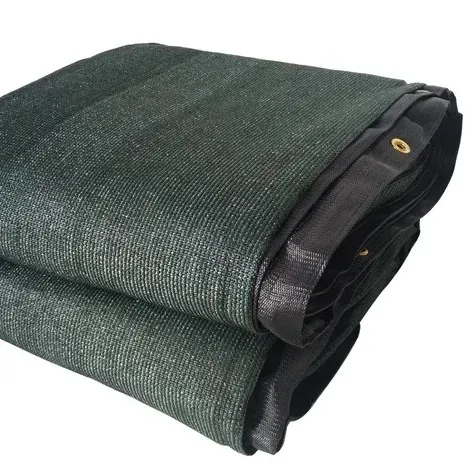-
 Afrikaans
Afrikaans -
 Albanian
Albanian -
 Amharic
Amharic -
 Arabic
Arabic -
 Armenian
Armenian -
 Azerbaijani
Azerbaijani -
 Basque
Basque -
 Belarusian
Belarusian -
 Bengali
Bengali -
 Bosnian
Bosnian -
 Bulgarian
Bulgarian -
 Catalan
Catalan -
 Cebuano
Cebuano -
 China
China -
 Corsican
Corsican -
 Croatian
Croatian -
 Czech
Czech -
 Danish
Danish -
 Dutch
Dutch -
 English
English -
 Esperanto
Esperanto -
 Estonian
Estonian -
 Finnish
Finnish -
 French
French -
 Frisian
Frisian -
 Galician
Galician -
 Georgian
Georgian -
 German
German -
 Greek
Greek -
 Gujarati
Gujarati -
 Haitian Creole
Haitian Creole -
 hausa
hausa -
 hawaiian
hawaiian -
 Hebrew
Hebrew -
 Hindi
Hindi -
 Miao
Miao -
 Hungarian
Hungarian -
 Icelandic
Icelandic -
 igbo
igbo -
 Indonesian
Indonesian -
 irish
irish -
 Italian
Italian -
 Japanese
Japanese -
 Javanese
Javanese -
 Kannada
Kannada -
 kazakh
kazakh -
 Khmer
Khmer -
 Rwandese
Rwandese -
 Korean
Korean -
 Kurdish
Kurdish -
 Kyrgyz
Kyrgyz -
 Lao
Lao -
 Latin
Latin -
 Latvian
Latvian -
 Lithuanian
Lithuanian -
 Luxembourgish
Luxembourgish -
 Macedonian
Macedonian -
 Malgashi
Malgashi -
 Malay
Malay -
 Malayalam
Malayalam -
 Maltese
Maltese -
 Maori
Maori -
 Marathi
Marathi -
 Mongolian
Mongolian -
 Myanmar
Myanmar -
 Nepali
Nepali -
 Norwegian
Norwegian -
 Norwegian
Norwegian -
 Occitan
Occitan -
 Pashto
Pashto -
 Persian
Persian -
 Polish
Polish -
 Portuguese
Portuguese -
 Punjabi
Punjabi -
 Romanian
Romanian -
 Russian
Russian -
 Samoan
Samoan -
 Scottish Gaelic
Scottish Gaelic -
 Serbian
Serbian -
 Sesotho
Sesotho -
 Shona
Shona -
 Sindhi
Sindhi -
 Sinhala
Sinhala -
 Slovak
Slovak -
 Slovenian
Slovenian -
 Somali
Somali -
 Spanish
Spanish -
 Sundanese
Sundanese -
 Swahili
Swahili -
 Swedish
Swedish -
 Tagalog
Tagalog -
 Tajik
Tajik -
 Tamil
Tamil -
 Tatar
Tatar -
 Telugu
Telugu -
 Thai
Thai -
 Turkish
Turkish -
 Turkmen
Turkmen -
 Ukrainian
Ukrainian -
 Urdu
Urdu -
 Uighur
Uighur -
 Uzbek
Uzbek -
 Vietnamese
Vietnamese -
 Welsh
Welsh -
 Bantu
Bantu -
 Yiddish
Yiddish -
 Yoruba
Yoruba -
 Zulu
Zulu
anti hail net for apple
The Importance of Anti-Hail Nets for Apple Orchards
The apple is one of the most beloved fruits worldwide, cherished not only for its delightful taste but also for its nutritional benefits. For apple growers, ensuring a successful harvest can be a challenging endeavor, particularly when it comes to protecting their delicate crops from unpredictable weather phenomena. One of the most detrimental threats to apple orchards is hail. The use of anti-hail nets has emerged as a pivotal strategy to mitigate the damage caused by hailstorms, ultimately safeguarding both the crop and the livelihood of farmers.
The Importance of Anti-Hail Nets for Apple Orchards
The construction of anti-hail nets consists typically of durable materials, such as polyethylene or polypropylene, which are engineered to withstand harsh weather conditions. The nets are often pitched at a certain angle and supported by a framework of poles, creating a protective canopy over the orchard. The design not only shelters the apple trees from hail but also provides other benefits such as shade, which can help regulate temperatures and protect blossoms from late spring frosts.
anti hail net for apple

One of the most significant advantages of using anti-hail nets is the improved yield and quality of the apples produced. Studies have shown that orchards protected by nets can experience up to 70% less damage during hailstorms compared to unprotected orchards. This reduction in physical damage translates into higher quantities of saleable fruit, ultimately increasing the profitability of apple farming. Additionally, the quality of the apples tends to be better, as the nets help prevent bruising and other physical injuries that can affect the fruit’s market value.
However, the initial investment for anti-hail netting can be substantial. Farmers must weigh the costs against the potential benefits, particularly in areas where hailstorms are a recurring threat. Nevertheless, many growers see anti-hail nets as a worthwhile investment that pays off in the long term. The decrease in crop loss and the enhancement in fruit quality often justify the upfront expenses. Moreover, governments and agricultural organizations occasionally provide financial assistance or subsidies to help offset these costs, making it more accessible for farmers to implement these protective measures.
Interestingly, anti-hail nets offer additional environmental benefits. By providing shade, they help reduce the temperature fluctuations in orchards, creating a more stable microclimate that can be beneficial for the trees. This stability encourages better growth and fruit development. Furthermore, the nets can also help reduce soil erosion and minimize the risk of runoff, promoting better soil health and sustainability in farming practices.
In conclusion, the use of anti-hail nets in apple orchards represents an innovative and effective approach to combat the challenges posed by unpredictable weather. By protecting delicate apple crops from hail, these nets not only safeguard the financial interests of farmers but also enhance the quality and yield of the produce. As climate patterns continue to shift and extreme weather events become more common, the adoption of protective measures like anti-hail nets will likely play an increasingly vital role in ensuring the sustainability and profitability of apple farming. Embracing technology and innovative solutions, the future of apple cultivation can be more resilient, fruitful, and economically viable.
-
Shipping Plastic Bags for Every NeedNewsJul.24,2025
-
Safety Netting: Your Shield in ConstructionNewsJul.24,2025
-
Plastic Mesh Netting for Everyday UseNewsJul.24,2025
-
Nylon Netting for Every UseNewsJul.24,2025
-
Mesh Breeder Box for Fish TanksNewsJul.24,2025
-
Expanded Steel Mesh Offers Durable VersatilityNewsJul.24,2025











